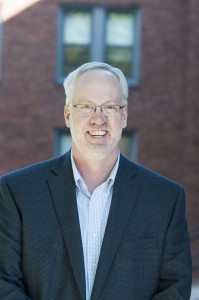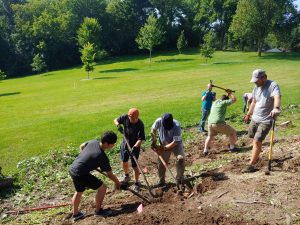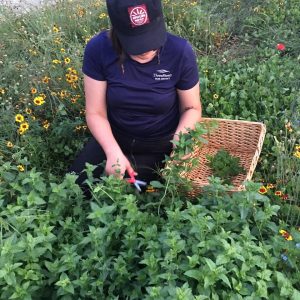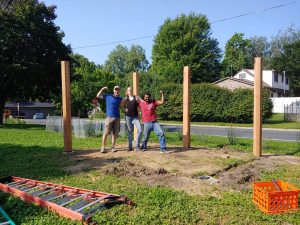Written by Kristina Frugé
A few years ago we were gathered with a handful of local pastors at a coffee shop discussing this idea of being a public church. My co-worker Amanda and I were describing the posture of this work as one that shifts our attention from an internal one out towards the neighborhood, the larger context our congregations are located in. The rich imagination of the vision Ezekiel describes in ch. 47: 1-12 inspires this orientation. Ezekiel’s guide in the text points out how the water flows from the sanctuary out into the wilderness, bringing life and flourishing where-ever it goes; as it flows it gets deeper and wider until it is a river that cannot be crossed.
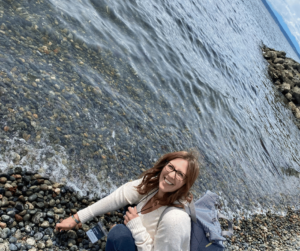 Water in the bible often connotes a never ending resource of life – God’s mercy flowing in abundance beyond our wildest imaginations. The invitation to become a public church is rooted in this vision as it begs us to take notice of what happens where God’s mercy flows and to get caught up in what God is up to in those places. God’s abundance can be contrasted with what often feels like a scarcity mindset when we are closed off from the outside world, mainly absorbed with our own worries and anxieties. However, God’s call urges us into the larger environment and relationship there. I hear this as good news to those of us in congregations where the temptation of a scarcity mindset is a daunting reality.
Water in the bible often connotes a never ending resource of life – God’s mercy flowing in abundance beyond our wildest imaginations. The invitation to become a public church is rooted in this vision as it begs us to take notice of what happens where God’s mercy flows and to get caught up in what God is up to in those places. God’s abundance can be contrasted with what often feels like a scarcity mindset when we are closed off from the outside world, mainly absorbed with our own worries and anxieties. However, God’s call urges us into the larger environment and relationship there. I hear this as good news to those of us in congregations where the temptation of a scarcity mindset is a daunting reality.
Sitting in that coffee shop years ago, as we dwelled in the vision Ezekiel stoked up in our imaginations for being public churches, one pastor offered a helpful distinction. She pointed out that being a public church is about becoming a vital neighbor within the larger ecosystem of the neighborhood we are a part of. (Shout out to Pr. Brenda at Bethel Lutheran in South Minneapolis for that little gem!) There is lots of talk about vitality and thriving in the church world, but what God’s promises often point to is an understanding of vitality and thriving that is mutual. That flows beyond the sanctuary. That is for all.
This is the arena of our wonderings and work in the Riverside Innovation Hub. Helping churches be vital neighbors is what we are about. It is also the way those of us on staff at RIH have been imagining our role with our neighbors. If you are reading this blog post, you are probably one of our neighbors! Our work and the resources we are able to leverage help us come alongside congregations and ministry leaders chasing after this work of being vital neighbors in our places. And so, as new seasons and new opportunities unfold for our work at RIH, we want to continue to explore how we can be vital neighbors to you – the larger ecosystem of church and ministry leaders doing this work on the ground in your many and varied places.
This February, we have had a couple key opportunities to listen to our neighbors, paying attention to your joys, your heartaches, your longings, and your curiosities. Continue reading “Being A Vital Neighbor”

